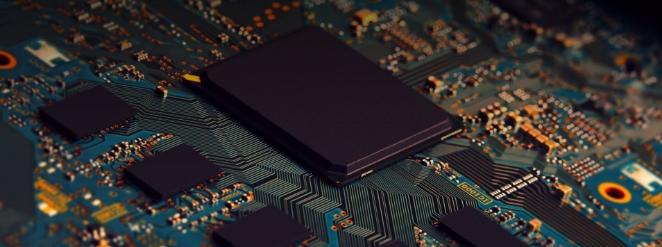Welcome to the world of high-volume BGA assembly, where cutting-edge technology meets efficient production processes to deliver exceptional printed circuit board assemblies (PCBAs). In this article, we will delve into the intricate details of BGA assembly, exploring its capabilities, benefits, and the critical role it plays in the manufacturing industry. Whether you are a PCB enthusiast, an electronics manufacturer, or simply curious about the wonders of modern technology, join us on this exciting journey as we unlock the potential of high-volume BGA assembly.

Over the years, PCB assembly techniques have rapidly evolved, leading to advanced manufacturing processes that are both efficient and reliable. Traditional approaches, such as through-hole technology, have paved the way for surface mount technology (SMT). SMT offers numerous advantages, including smaller footprints, increased component density, and enhanced electrical performance.
2.1 An Introduction to BGA Components
BGA, or ball grid array, is a type of integrated circuit (IC) package that has gained immense popularity in the electronics industry. Unlike traditional packages, BGA components feature an array of tiny solder balls on the underside of the package, connecting the IC to the PCB.
2.2 Advantages of BGA Packages
The unique design of BGA packages offers several advantages over their predecessors. These include improved thermal conductivity, reduced electrical noise, enhanced mechanical strength, and the ability to accommodate higher pin densities.
3.1 High-Volume Production Efficiency
BGA assembly is particularly well-suited for high-volume production due to its streamlined manufacturing process. With advanced automated equipment and optimized workflows, manufacturers can achieve remarkable output rates, making BGA assembly an ideal choice when large quantities of PCBAs are required.
3.2 Reliability and Durability
One of the primary reasons for utilizing BGA assembly is to enhance the reliability and durability of PCBAs. BGA components provide robust connections, reducing the risk of solder joint failures and increasing overall product lifespan.
3.3 Improved Electrical Performance
The smaller size and shorter trace lengths in BGA packages result in reduced electrical resistance and inductance. This leads to improved signal integrity, higher operating frequencies, and enhanced overall performance of electronic devices.
4.1 Solder Ball Alignment
Aligning the numerous solder balls on a BGA component accurately can be challenging. However, advanced manufacturing techniques, such as automated optical inspection (AOI) and solder paste inspection (SPI), ensure precise alignment and reduce the risk of misalignment.
4.2 Thermal Management
Efficient thermal management is crucial in BGA assembly to prevent overheating and maintain the integrity of the solder joints. Manufacturers employ various techniques, including thermal vias, heat sinks, and controlled reflow profiles, to optimize heat dissipation during assembly.
4.3 X-Ray Inspection
Due to the hidden nature of solder joints beneath the BGA package, X-ray inspection is essential to ensure the integrity of the assembly. This non-destructive testing method enables manufacturers to identify any potential defects and take corrective measures promptly.
5.1 Advanced Equipment and Technologies
High-volume BGA assembly requires state-of-the-art equipment and technologies to achieve exceptional results. From automated pick-and-place machines to precision soldering and inspection systems, investing in advanced capabilities is crucial to meeting production requirements.
5.2 Component Size and Density
BGA assemblies enable miniaturization while accommodating a higher pin count. This allows for complex electronic designs with smaller form factors, making them ideal for applications where space is limited.
5.3 Design for Manufacturability
Collaboration between PCB designers and manufacturers is integral to achieving successful BGA assembly outcomes. Design considerations, such as proper pad layout, solder mask openings, and thermal management, play a significant role in ensuring manufacturability and reducing the risk of assembly issues.
In an ever-advancing technological landscape, the future of BGA assembly looks promising. As electronic devices continue to shrink in size and demand for high-performance capabilities increases, BGA packages will play a crucial role in meeting these requirements. Advancements such as 2.5D and 3D packaging, improved thermal solutions, and further automation will shape the future of high-volume BGA assembly.
As we conclude this exploration of high-volume BGA assembly, we have only scratched the surface of the vast possibilities this technology holds. From the evolution of PCB assembly techniques to the advantages of BGA packages, we have witnessed the remarkable strides made in the field. BGA assembly offers increased production efficiency, reliability, and improved electrical performance, revolutionizing the manufacturing industry.
Continue to embrace the wonders of BGA assembly and discover new possibilities as this technology moves towards a more promising future.
What does BGA stand for in electronics?
BGA stands for Ball Grid Array, which is a type of integrated circuit package featuring an array of tiny solder balls.
What are the advantages of BGA packages?
BGA packages offer improved thermal conductivity, reduced electrical noise, enhanced mechanical strength, and the ability to accommodate higher pin densities.
How does BGA assembly ensure reliability and durability?
BGA assembly provides robust connections, reducing the risk of solder joint failures and increasing the overall durability of printed circuit board assemblies.
What challenges are involved in BGA assembly?
Challenges in BGA assembly include solder ball alignment, thermal management, and the need for X-ray inspection to ensure proper assembly quality.
What does the future hold for BGA assembly?
The future of BGA assembly involves advancements in 2.5D and 3D packaging, improved thermal solutions, and increased automation, catering to the demands of smaller and more powerful electronic devices.
Note: The content of this article is purely informational and does not constitute professional advice. Always consult with experts in the field for specific guidance.